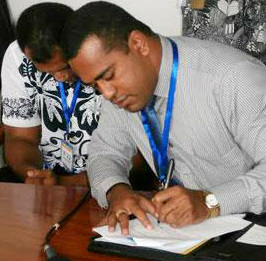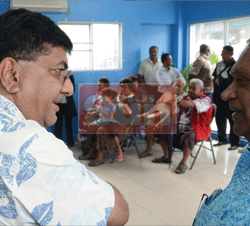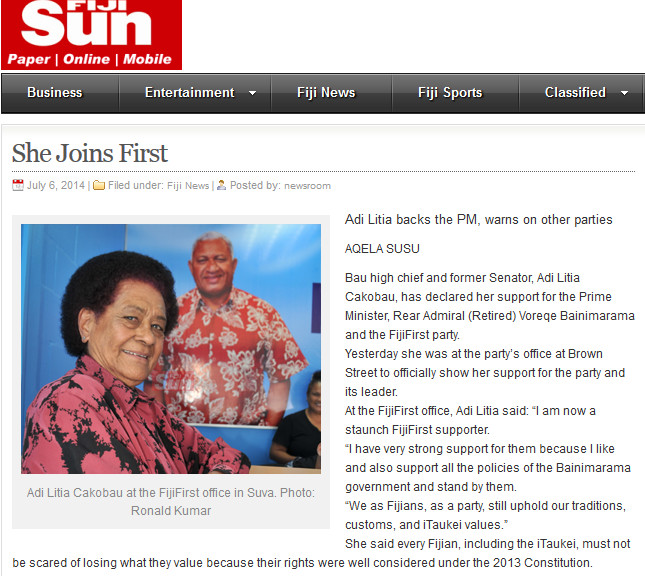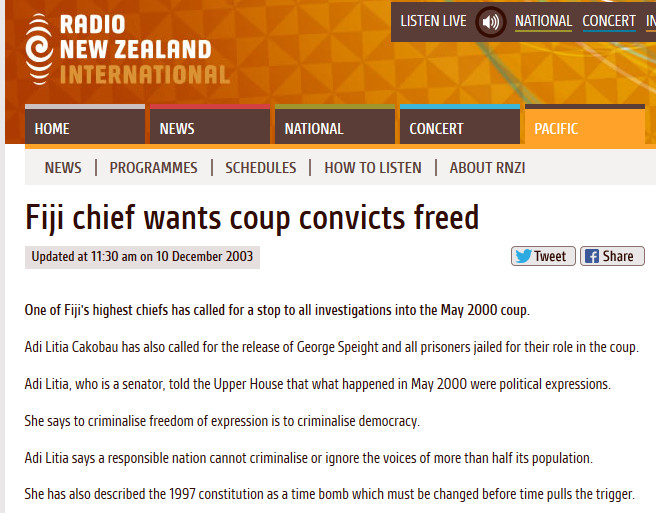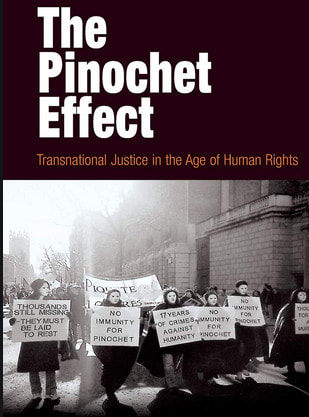| BUT FIJIFIRST PARTY HAS ITS OWN HURDLES: Why does Frank boast he’ll win all 50 seats? Bainimarama’s arrogant boast that he can win all 50 seats won’t surprise too many people. What else would we expect from a dictator who thinks his is the only view anyone should be able read in the media? But there’s more to it than that. He has to hand out places on the FF party list which will determine who on his list will actually get a seat in parliament. He assumes that his voting system means he can win more votes than he needs for one seat and then the other candidates will get his surplus votes in the order in which they are on the party list. So he has to give a number of higher places to Indo-Fijians or his government will look like his officer’s mess at QEB, a mono-ethnic sham. When we see the party candidates we’ll all be looking for how many credible Indo-Fijian candidates he can muster. Then when we see where he puts them on a list they will know how serious he is about them winning. He says he can win all seats – meaning they don’t need to worry about where they are on the list – but we know that’s not true, he knows it’s not true and the candidates all know it’s not true. The candidates will understand that their chances of winning will depend on when they get their invite and where they are on Frank’s (well we all know it will be Khaiyum’s) list. | Fijileaks Editor: See alternative analysis of Professor Wadan Narsey: http://www.fijileaks.com/home/hung-parliament-effect-of-open-list-proportional-system-in-election |
Excerpt, VICTOR LAL (Fiji's The Daily Post, 2000)
The 1994 Elections and Fijian Divisions
It was the second general election under the new racist Constitution promulgated in 1990 after the two military take-overs in 1987 by Sitiveni Rabuka. The election was notable for the fact that the incumbent Prime Minister Rabuka was not expected to do well as dissidents in his party had broken away to form new political parties to challenge his rule. Fiji had undergone several changes prior to the 1994 elections. The President, Ratu Sir Penaia Ganilau, had passed away, and the Great Council of Chiefs had elected Ratu Mara as his successor.
The 1994 election campaign was dominated by intra-ethnic instead of inter-ethnic issues and conflicts and debates centred around communal issues because each group was fighting for communal seats. For the Indo-Fijians, the central issue of the racially biased constitution took a back seat to FLP/NFP rivalry, most of it at a personal level between Chaudhry and Reddy. Chaudhry and the FLP were repeatedly taunted by the NFP for their support for Rabuka in the aftermath of the 1992 election. The NFP claimed that the support had yielded nothing. The FLP, on the other hand, accused the NFP for being too close to Rabuka, who unwittingly reinforced this image when he announced that he planned to set up a government of national unity with Reddy after the elections. FLP also attacked NFP for being an ‘Indian’ party as opposed to FLP’s multi.racial character.
On the Fijian side, Josevata Kamikamica hastily launched a new political party, Fijian Association Party (FAP) to challenge Rabuka and the SVT. The FAP had the tacit support of the President Mara who had openly expressed his support for Kamikamica for the premiership at the Great Council of Chiefs but he was outvoted, in part by Rabuka’s politicised nominees on the Council. The SVT also condemned Kamikamica of helping to hand political power back to the Indo-Fijians. Kamikamica, on the other hand, played right into the hands of SVT nationalists when he made the strategic mistake of announcing that he would form a coalition government with the Indo-Fijians if he won the 1994 elections. He had promised to restore integrity and dignity to Fijian leadership.
Tora-Adi Kuini Join Fray
The already fragmented Fijian populace had the spectre of dealing with two other political entrants in the election-Apisai Tora and Adi Kuini Vuikaba-Speed, widow of the deposed premier Bavadra, and the remarried wife of the Australian political consultant Clive Speed. Tora, who has been a member of every political party in Fiji, this time formed his own All National Congress(ANC), which did not win a single seat in the 1992 election. He solicited votes on a platform of multi-racialism (yes!) and the exclusion of the Great Council of Chiefs from politics. At his political side was Adi Kuini. Earlier she had announced her retirement from active politics but she attempted a comeback as a candidate for the ANC. Another candidate for the ANC was David Pickering, who had defected from the GVP. At the end of the day the issue among the Fijians and Indo-Fijians revolved around leadership: did they want Rabuka over Kamikamica and Reddy over Chaudhry?
The election results were interesting. The NFP won an extra 6 seats to increase its MPs to 20. There was also an increase of 5% of Indo-Fijian vote for it. The FLP only managed to win 7 seats. The results suggested that Indo-Fijians preferred Reddy’s cautious and moderate approach to Chaudhry’s often confrontational approach. The Indo-Fijian voters were also not ready for Chaudhry’s politics of multi-racialism.
Among the General Voters, the GVP managed to retain the four seats with the fifth going to Pickering. Tora and Adi Kuini were comprehensively beaten at the polls. The SVT and Rabuka managed to hold on to power by one seat, increasing their seats to 31. In terms of voting percentages, SVT’s vote actually dropped 4%. The SVT’s Deputy Prime Minister, Filipe Bole, lost his seat to FAP’s candidate Ratu Finau Mara in the Lau constituency, where his father is the hereditary chief of Lau.
The FAP only managed to win 14 % of the Fijian vote which translated into 5 constituencies (3 in Lau and 2 in Naitasiri). The SVT had the upper hand because of the wide gulf between urban and rural Fijians and the fact that rural Fijians were allocated more seats. The military and significant members of the Methodist Church bloc-voted for the SVT boosting its overall win. Kamikamica’s announcement that he would form a Coalition with Indo-Fijians also robbed him of crucial Fijian votes. Kamikamica lost his own seat
Ratu Mara had no choice but to ask Rabuka and the SVT to form the next government. Rabuka had the support of 37 MPs (31 SVT, 4 GVP, one independent and Rotuma’s Manueli). He did not have to rely on Indo-Fijian MPs. His main critics now nested in the rival FAP political bure. The indigenous Fijian political elite had embarked on an uncertain journey of political rivalry in the future.
The only thing the 1994 election resolved was which Fijian was to become Prime Minister and the answer was Rabuka and not Kamikamica.
The irony is that Indo-Fijian political leaders had become power brokers in the face of Fijian disunity. The newly-elected Prime Minister Rabuka could not ignore their demands for constitutional change in the light of political and ‘kama sutra’ scandals hovering over his head. But he could find refuge in the constitutional process, and he was forced to initiate negotiations between Reddy and Chaudhry culminating in the setting up of the Constitutional Review Commission (The Reeves Commission). The recommendations of the Commission provided the basis on which the Joint Parliamentary Select Committee (JPSC) made its recommendations to Parliament.
The end result, as we know, was the new electoral system, accountability, and multi-party government concept in the 1997 Constitution of Fiji.
An old conch shell blowing different tune - Adi Litia Cakobau forgets poll lesson from past; in 2001 she had asked Bainimarama to hand over command of the RFMF to the GCC; also, she wanted George Speight freed from prison: "What happened in 2000 were political expressions"
The Mara/Cakobau Dynasty
In recent years there has been a public split between the Mara/Cakobau political and traditional dynasty. The victory of the Fiji Labour Party, the inclusion of Ratu Mara’s daughter as a Minister in Chaudhry’s government, and Ratu Mara’s elevation as President of Fiji, drove a further wedge between the Mara-Cakobau clan in Fijian politics. It was not surprising, therefore, that Speight and others hailing from the Cakobau side of the traditional clan had been baying for Mara’s political blood shortly after seizing power. Unlike the Mara family, the Cakobau family had been badly defeated at the polls.
As the Daily Post pointed out on 19 May 1999, a year to the day Speight and his hoodlums seized the Chaudhry government, the Cakobau family name was not enough to muster the support of Tailevu voters as brother, sister, and cousin lost their respective seats. Members of this chiefly Bau and Tailevu family, regarded highly throughout the country, could not hold on to their voting leads, and lost out after preferences were distributed. Ratu Epenisa Cakobau, Adi Litia Cakobau’s brother, lost the Tailevu South Lomaiviti open seat to political enthusiast and Fiji Labour Party candidate Isireli Vuivau. Ratu Epenisa was among those who had formed the Fijian Association Party. However, he withdrew his support from the party after his elder sister Adi Samanunu contested the 1994 elections for the SVT. ‘Family unity is very important to me’, he had said then.
The first to concede defeat was Adi Litia Cakobau, the daughter of the late Vunivalu. She had contested the Tailevu North/Ovalau open seat, a seat which my late father, as President of the Tailevu North Alliance District Council, had actively campaigned and helped Ratu George Cakobau to win in the 1970s. Adi Litia and Ratu Epenisa had contested the elections under the SVT electoral tickets. An emotional Adi Litia attributed their loss to what she described as the other Fijian parties determination to eliminate the SVT. ‘It is really sad that the other parties had preached that we had sold out the interest of Fijians. People, the Fijians, need to understand their Constitution. The rights of the indigenous is well protected. The question they should ask is what will happen now-will they be able to get extra or special protection as given to them by the SVT.’
She noted that her loss was as a result of ‘a divided Fijian front’. Adi Litia said that the ‘vanua no longer could dictate the people’s political preference but that is democracy’. ‘The people have chosen their representatives and that is what counts’, Adi Litia said. She had also moved Sitiveni Rabuka’s name for chairman of the Great Council of Chiefs, while Ratu Tevita Vakalalabure of Cakaudrove moved her name for vice chairman. This clearly showed that the provinces of Tailevu and Cakaudrove wanted to control the Council, especially after the SVT lost power in the general elections to the Peoples Coalition of Labour, Fijian Association and PANU.
History is also repeating itself. Professor Ravuvu is asking us to wait for the birth of a new Constitution. If a Constitution emerges from such a chaotic and inexpert approach, we will have a Constitution with all the attendant problems of the ‘Bau Constitution’ of the 19th Century.
In the next instalment, we will demonstrate that the current crisis in the Fijian community has its roots in the past. And unless the constitutional framers come to grips with Fijians 19th Century past, they would not be able to chart the Fijians’ 21st Century future.

